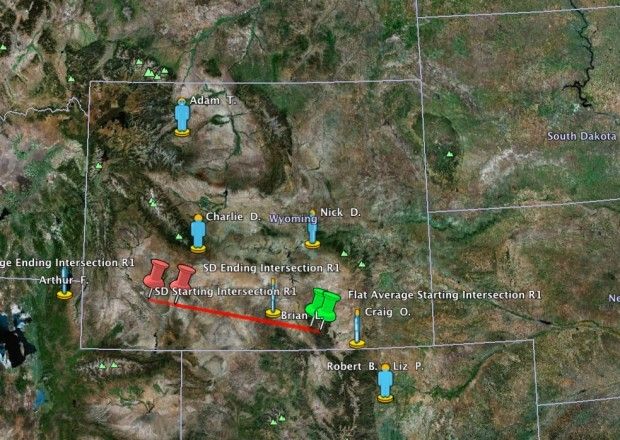
Jordan Dowers of Olympia, Wash., was driving along Interstate 80 near Laramie with his father when they spotted it about 10:45 p.m.
"The first thing we noticed is the sky lit up really bright," said Dowers, 23. "At first it was, 'Where did that lightning strike come from?' Then it was much, much brighter than lightning. From the south, it was neon blue. It looked like it was going to hit the ground. Then it just disappeared."
Eight witnesses reported the event to the American Meteor Society, including people as far away as Idaho and Colorado.
Technically, the meteor is called a bolide, said society volunteer Mike Hankey, who lives in Baltimore.
Bolides tend to be blue in color.
A bolide is "the type of meteor that leaves meteorites" after exploding, Hankey said. "It's really bright. It gets everyone excited."
Hankey estimated the bolide's trajectory at 150 miles. It traveled from southeast to northwest and lasted just seconds.
"They blow up and that's when all that light happens," Hankey said. "Then the boulder turns into thousands of little pieces."
In fact, it's rare for stuff from outer space to stream through the atmosphere without burning up or exploding, he said.
"With movies and all this, we think it's, like, this burning mass that hits the ground and then there's this explosion and a crater on the ground. That happens only once every 100,000 years," he said.
About three bolides trail across the Earth's skies a day. But a person actually seeing a bolide is rare since most of the world is covered by oceans. Most people will only see a bolide once or twice in their lifetimes, Hankey said.
In Wyoming, the lack of light pollution from cities may increase someone's chances. At 5:45 a.m. on March 28, a meteor that traveled across the sky from the Big Horn Mountains to Montana's Medicine Rocks State Park was seen by people as far away as Canada. Numerous Casperites who were commuting for work saw it, too.
Hankey said that when he started working with the society in 2009, only a few bolides were reported.
"This year, it's crazy, man," he said. "They're happening left and right. [People] are more aware. They're more connected. They're using the Internet. They know about our site."



'once every 100,000 years.'
Really? but then he was only a 'society volunteer', so maybe he's working with govt numbers?